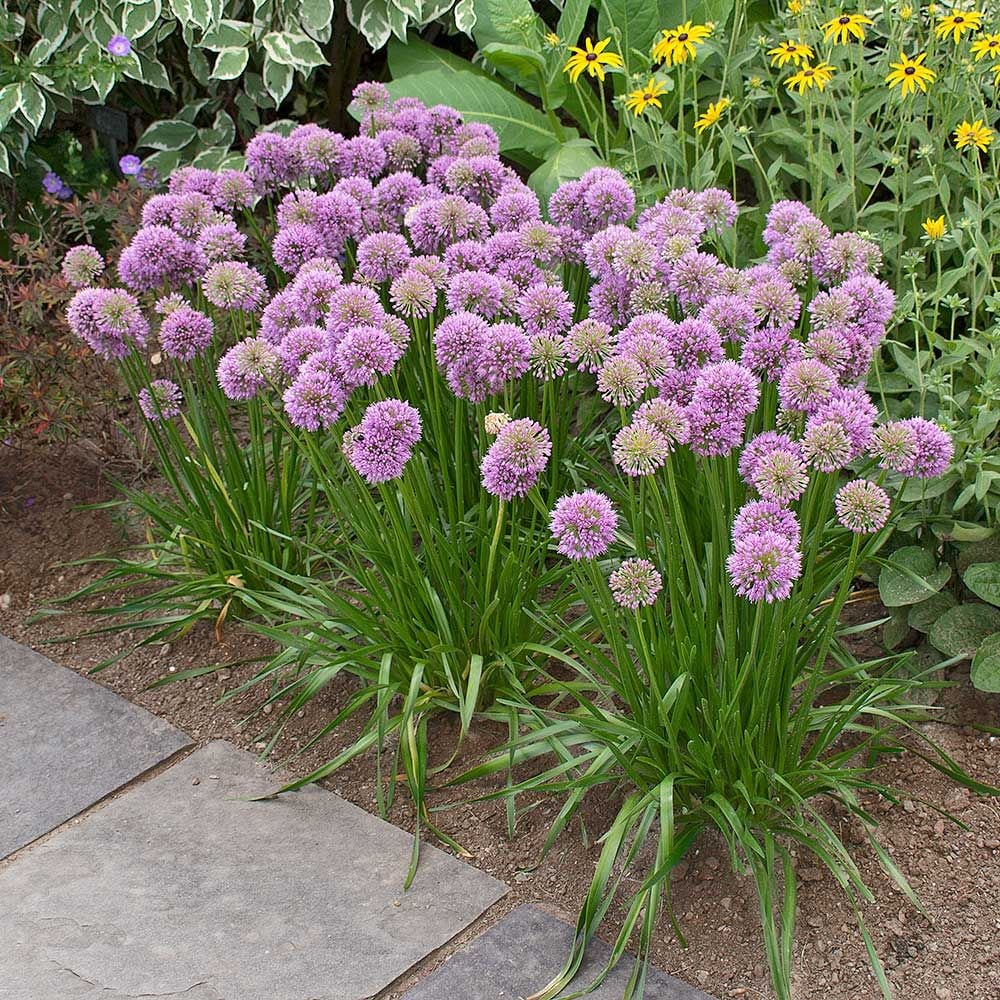Allium Millenium Plant: A Gardeners’ Delight
Allium Millenium, also known as Millenium Ornamental Onion, is a perennial plant that has gained popularity among gardeners for its stunning blooms and easy care requirements. This plant belongs to the Allium genus, which includes over 700 species of flowering plants, commonly known as onions and garlic. Allium Millenium is a hybrid plant, developed by Mark McDonough, a horticulturist from Massachusetts, and it has quickly become a favorite among gardeners for its long-lasting blooms and low maintenance needs.
Characteristics of Allium Millenium
Allium Millenium is a clump-forming perennial that grows to a height of 12-18 inches and a spread of 12-18 inches. It produces strappy, deep green foliage that forms a dense mound, providing a lovely backdrop for its showy blooms. The plant blooms in late summer to early fall, producing spherical clusters of rosy-purple flowers on strong, upright stems. The individual florets are star-shaped and appear in profusion, creating a stunning visual display in the garden.
Care and Maintenance
One of the main reasons why Allium Millenium has become popular among gardeners is its low maintenance requirements. This plant thrives in full sun to partial shade and well-drained soil. It is drought-tolerant once established and is relatively pest and disease resistant. Allium Millenium is also deer and rabbit resistant, making it an excellent choice for gardens where these animals are a problem.
To grow Allium Millenium successfully, plant it in a location with well-drained soil and full sun. The plant will benefit from a light application of fertilizer in the spring and regular watering during dry periods. Deadhead the spent blooms to encourage continuous flowering and divide the plant every few years to maintain its vigor.
Landscaping with Allium Millenium

Allium Millenium is a versatile plant that can be used in a variety of garden settings. Its compact size makes it ideal for borders, rock gardens, and containers. The plant looks stunning when planted in drifts or massed together in groups. Allium Millenium also pairs well with other late-season bloomers, such as asters, sedums, and ornamental grasses, creating a colorful and dynamic display in the garden.
In addition to its ornamental value, Allium Millenium is also attractive to pollinators, such as bees and butterflies, making it a valuable addition to pollinator gardens. The plant’s long blooming period provides a food source for these beneficial insects late in the season when other nectar sources may be scarce.
Propagation
Allium Millenium can be propagated by division or by seed. To divide the plant, dig up the clump in early spring or fall, and carefully separate the individual bulbs. Replant the divisions in well-prepared soil and water thoroughly. To grow Allium Millenium from seed, collect the seeds from the spent flower heads and sow them in a seed-starting mix in the spring. Keep the soil moist and warm until the seeds germinate, then transplant the seedlings into individual pots or directly into the garden.
Conclusion
In conclusion, Allium Millenium is a beautiful and easy-to-grow plant that deserves a place in every garden. Its stunning blooms, low maintenance requirements, and versatility make it a favorite among gardeners of all skill levels. Whether planted in borders, rock gardens, or containers, Allium Millenium is sure to add color and interest to any landscape. Consider adding this plant to your garden this season and enjoy its beauty for years to come.
